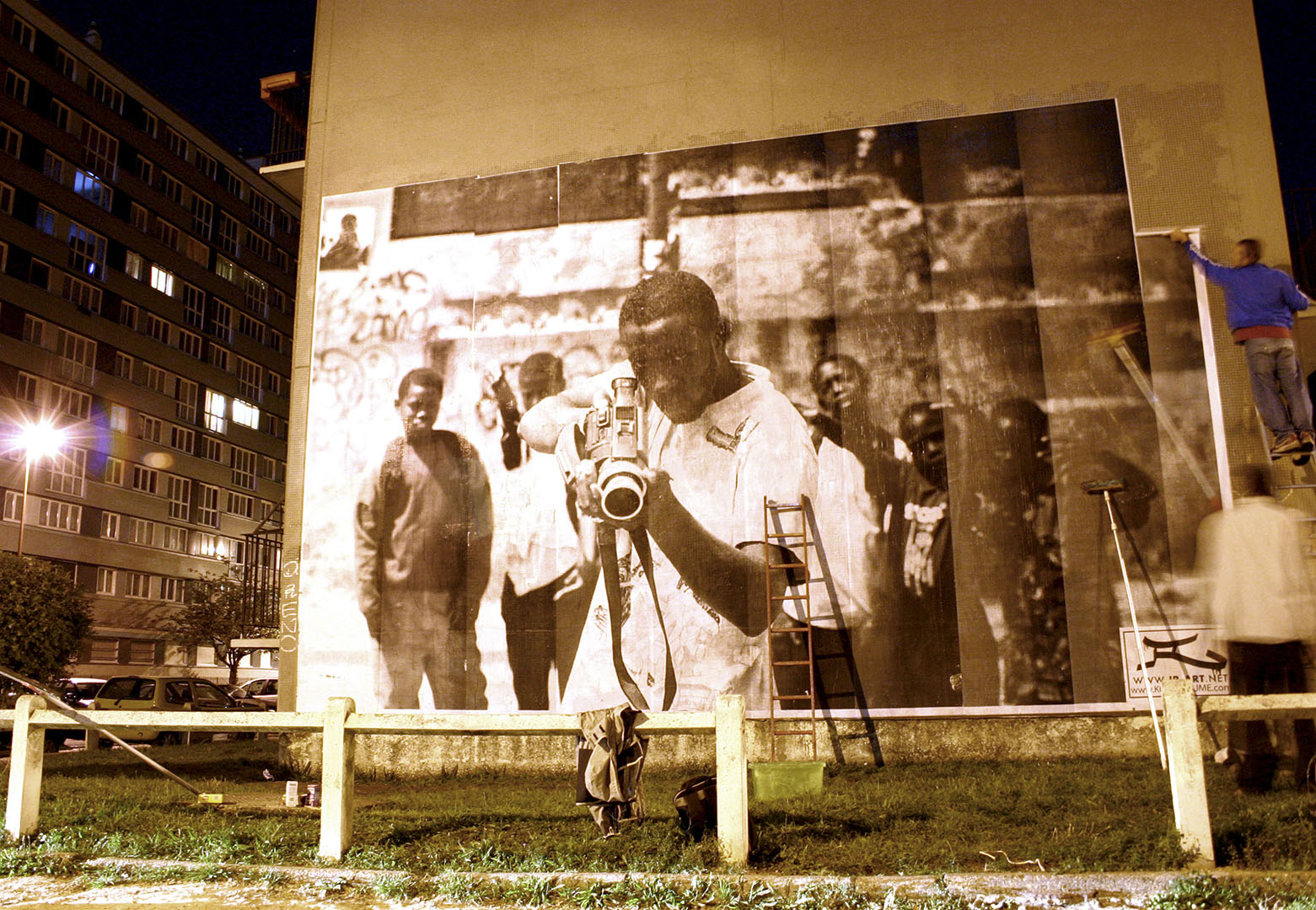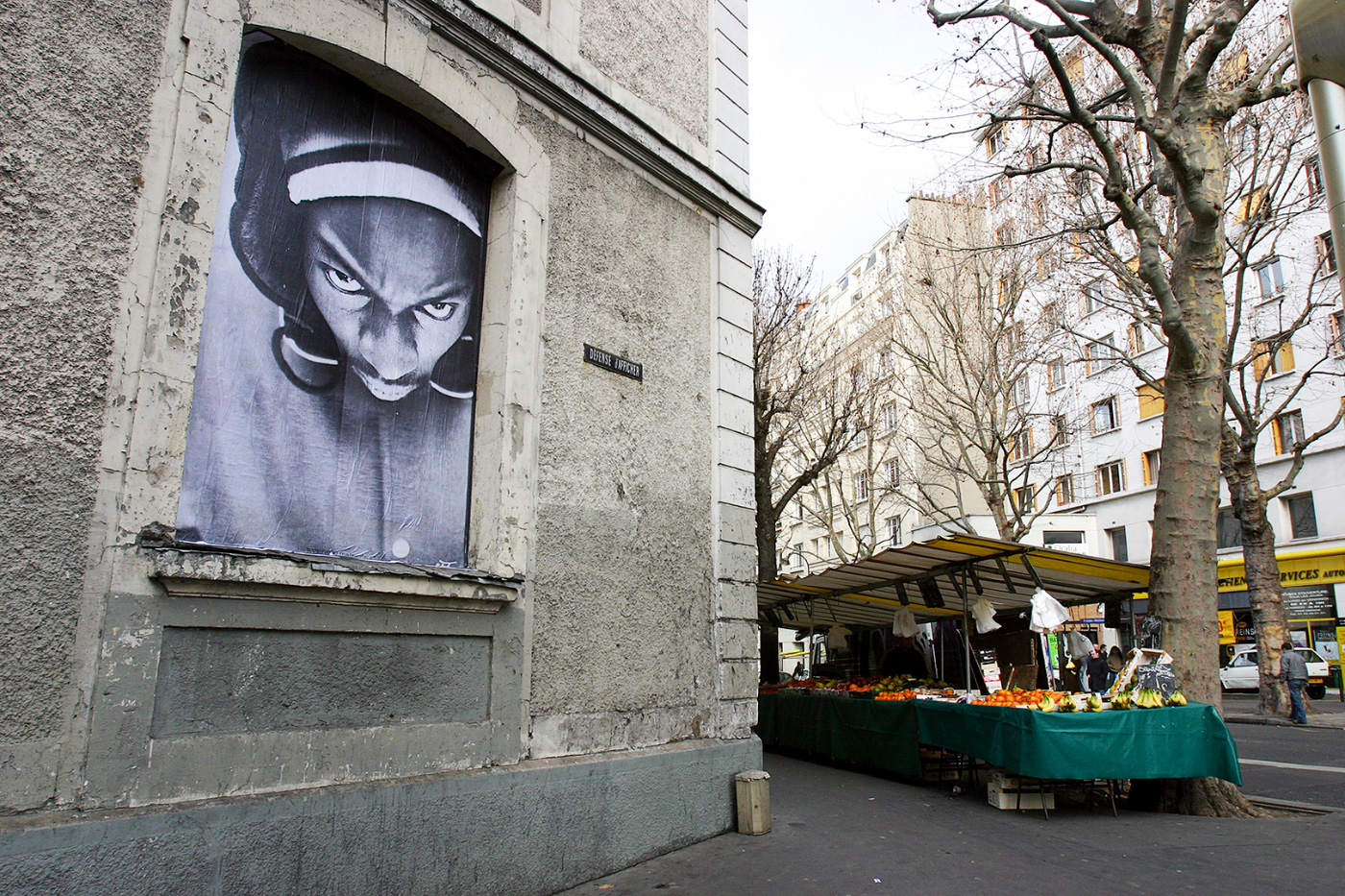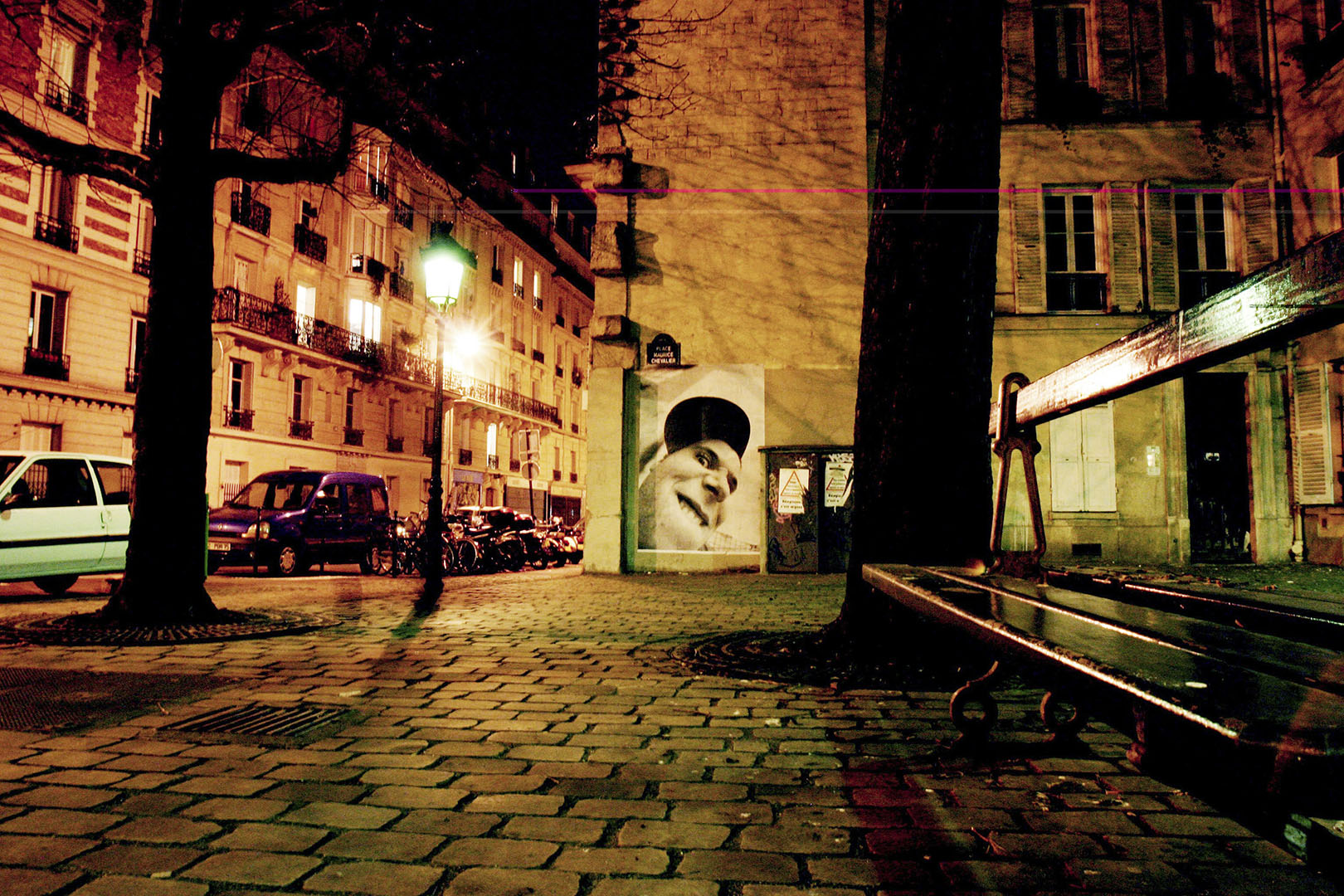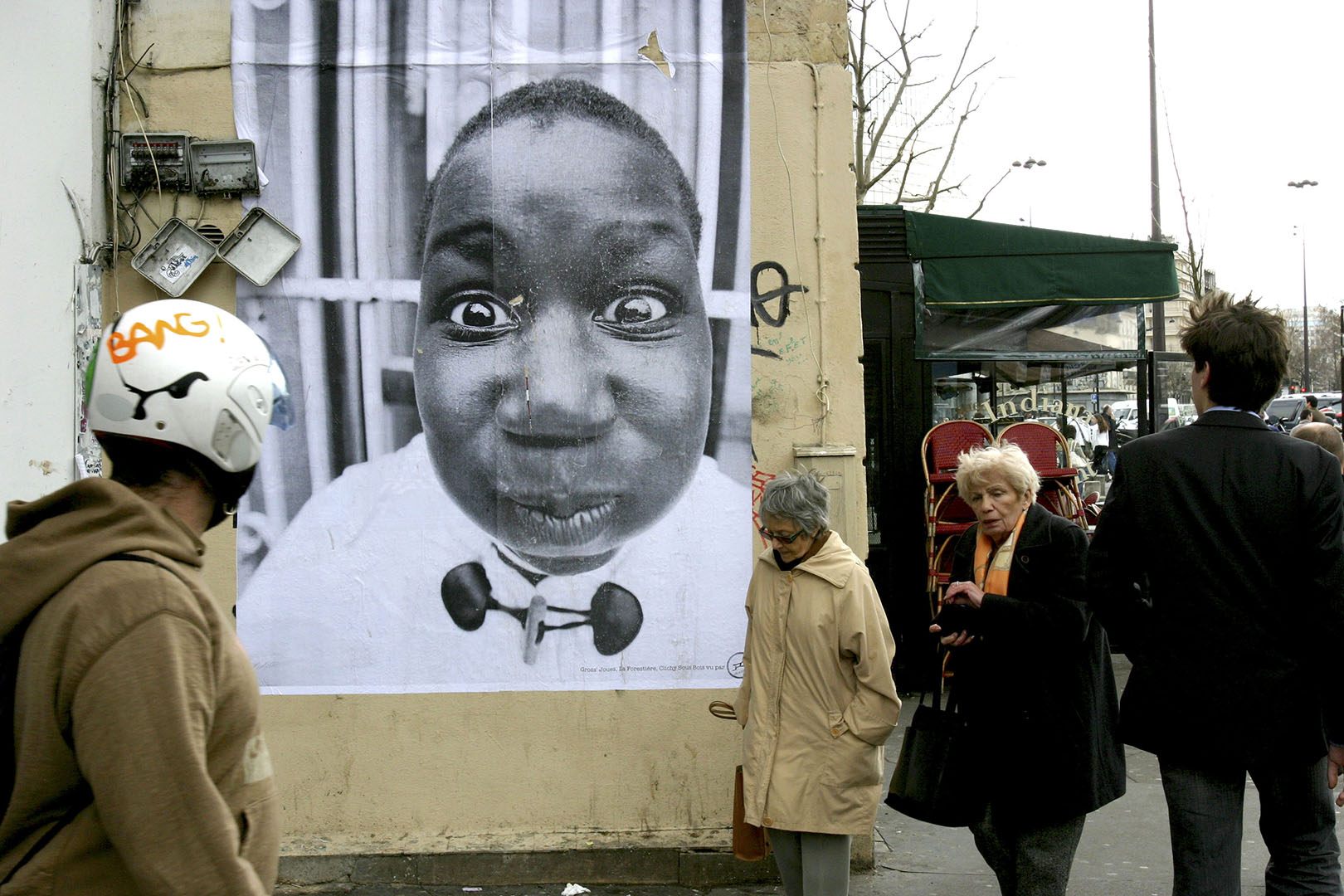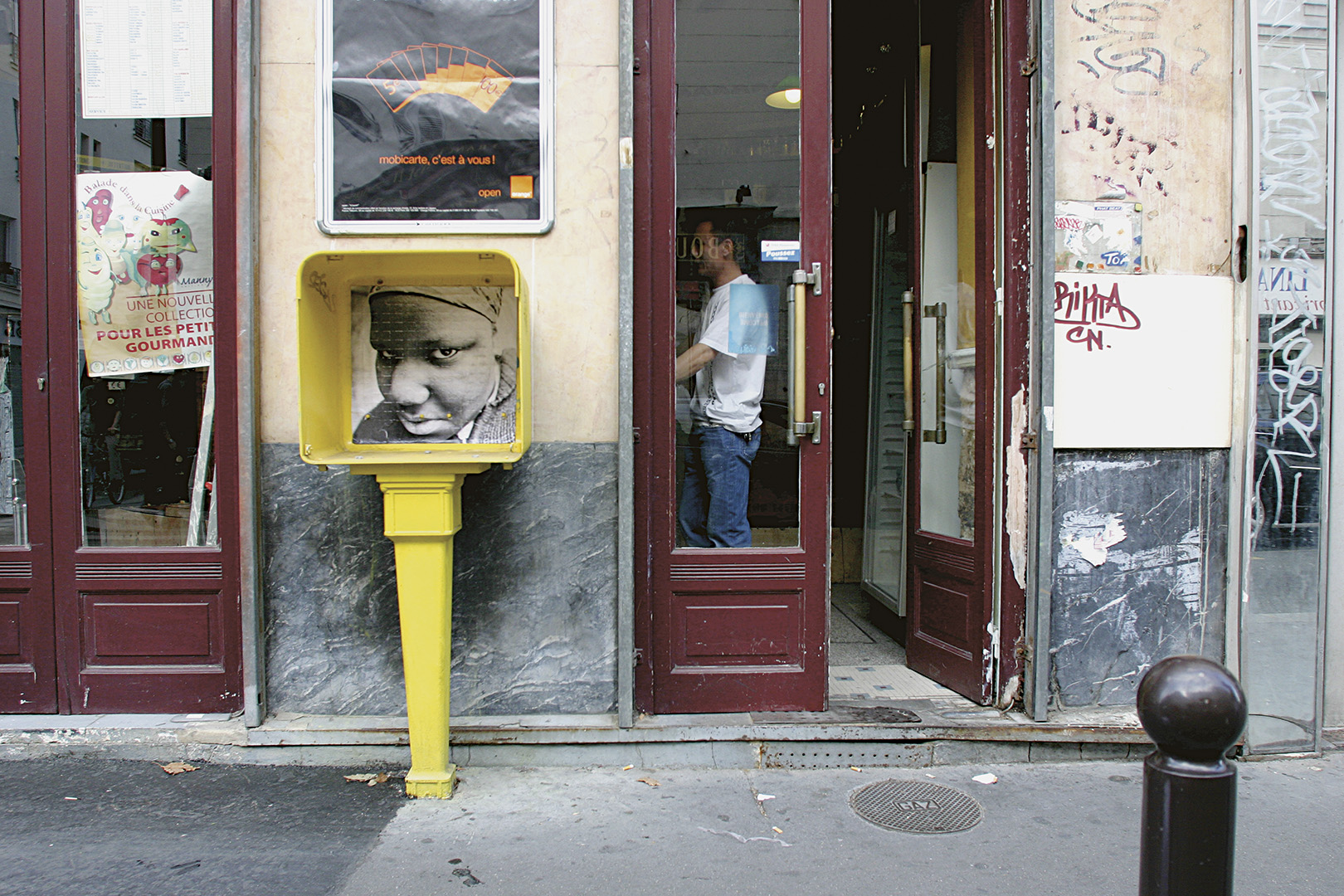Portrait of a generation, 2004 – 2006
In 2004, in search of places where no-one would expect to see art, JR held his first exhibition on the walls of Les Bosquets, the ‘ghetto’ of Montfermeil, a suburb of Paris. He photographed its young inhabitants and pasted enlarged photocopies to the walls. In November 2005, in the very same place, in a climate of social discontent triggered by the deaths of two teenage boys who were hiding from police in an electricity substation, riots broke out and quickly spread through the city. More than 10,000 cars were burnt by inhabitants of the suburbs in one month alone. Rather than only disrupting other neighbourhoods of Paris, the rioters also destroyed their own environment, breaking the only toys left in their backyard.
Across France, people watched frightening images of the events on television. The media portrayed out-of- control kids throwing Molotov cocktails, attacking cops and firemen and looting anything they could. Political leaders from all sides – who had failed to make things any better – were on air every day, juggling buzzwords: prevention, repression, integration, immigration, youth, assimilation, education, citizenship, respect, language, generation, soccer.
They discussed the symptoms of this sudden fever without looking at the causes behind it. In reaction to the media treatment of people who had become his friends, in 2006, JR returned to the heart of the district and, with his friend Ladj Ly, a local artist, began a project with the young people of Les Bosquets. Aware, of course, that they were not all angels, JR nevertheless wanted to challenge the term racaille, or ‘scum’, the then Minister of the Interior had used to describe the rioters. Using a 28 mm lens, he shot full-frame portraits of young people pulling scary faces to caricature themselves and pasted the enlarged posters onto the walls of both Les Bosquets and ‘bobo’ (bourgeois bohemian) districts of the city.
Portrait of a Generation invited us to look into the eyes of men playing bad boys. With a certain ‘in your face’ rudeness, the portraits provoked passers-by to question the media representation of them. Were they promising students or thugs? France’s future or a threat to national identity? What were their dreams and their nightmares? Should they be punished or motivated? Were the riots an eruption of violence or the beginning of a revolution? Most importantly, should we close our doors to them – or open our arms?
Portrait of a Generation, Destruction 2006
In 2013, JR learned that the buildings that featured the original pastings in Les Bosquets were soon to be demolished, so he revisited the Portrait of a Generation project. Using the photographs from the original series, JR and his team secretly pasted two-storey-high portraits in the buildings before they were knocked down. During the demolition, the portraits were exposed, creating a new dialogue between the recent history of Paris, its suburbs and their inhabitants.

